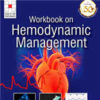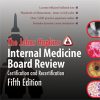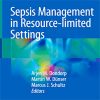Doppler Echocardiographic Indices in Critically Ill Patients Under Mechanical Ventilation
pubmed.ncbi.nlm.nih.gov
Doppler Echocardiographic Indices Are Specific But Not Sensitive to Predict Pulmonary Artery Occlusion Pressure in Critically Ill Patients Under Mechanical Ventilation.
The objective of this study was to prospectively evaluate the ability of transthoracic echocardiography to assess pulmonary artery occlusion pressure in mechanically ventilated critically ill patients.
53 mechanically ventilated patients in sinus rhythm admitted to our ICU.
Transthoracic echocardiography was performed simultaneously to pulmonary artery catheter.
Transmitral early velocity wave recorded using pulsed wave Doppler (E), late transmitral velocity wave recorded using pulsed wave Doppler (A), and deceleration time of E wave were recorded using pulsed Doppler as well as early mitral annulus velocity wave recorded using tissue Doppler imaging (E’).
Pulmonary artery occlusion pressure was measured simultaneously using pulmonary artery catheter.
There was a significant correlation between pulmonary artery occlusion pressure and lateral ratio between E wave and E’ (E/E’ ratio) (r = 0.35; p < 0.01), ratio between E wave and A wave (E/A ratio) (r = 0.41; p < 0.002), and deceleration time of E wave (r = -0.34; p < 0.02). E/E’ greater than 15 was predictive of pulmonary artery occlusion pressure greater than or equal to 18 mm Hg with a sensitivity of 25% and a specificity of 95%, whereas E/E’ less than 7 was predictive of pulmonary artery occlusion pressure less than 18 mm Hg with a sensitivity of 32% and a specificity of 81%.















